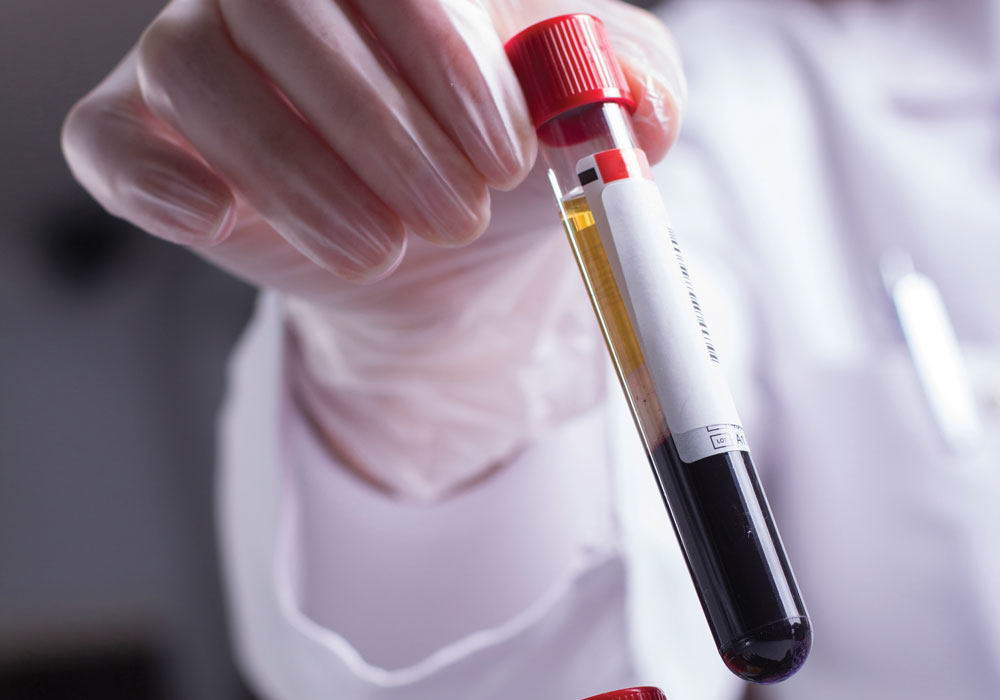Zhang is a 67-year-old man who had no history of medical concerns until he was hospitalized for pneumonia. A complete blood count taken during his workup for pneumonia showed pancytopenia, and a biopsy confirmed a diagnosis of acute myeloid leukemia (AML). After multiple rounds of induction therapy, Zhang's bone marrow biopsy showed minimal residual disease and he entered remission. His oncologist recommends an allogeneic hematopoietic stem cell transplant as soon as possible because of the disease's aggressive nature, but he has no match in the registry.
What Would You Do?
Patients with AML can seek donor cells from a registry, family members, or umbilical cord blood. Clinicians use human leukocyte antigen (HLA) typing to find a match for transplant recipients. Typically, the closer the match is to HLA typing, the better the outcome.
The oncologist recommends an umbilical cord blood transplant (UCBT). Umbilical cord blood does not require strict HLA tissue typing because the cells have low immunogenicity. With less-stringent HLA typing, Zhang has more donor options, and UCBT offers other benefits as well.
- A common post-transplant complication is graft-versus-host disease (GVHD). Although umbilical cord blood grafts require less stringent HLA typing, studies show decreased acute and chronic GVHD incidences when fewer HLA disparities exist between donor and recipient than matched unrelated donor recipients.
- Because of the rapid availability of umbilical cord blood, UCBT is an option for patients who urgently need a transplant because of their disease's aggressiveness or lack of access to donors because of a pandemic.
- Some studies show a decrease in relapse risk for UCBT recipients. Other studies show that leukemia-free survival is similar between UCBT and matched unrelated donor recipients.
Zhang asks, "Is this too good to be true? Why doesn't everyone receive a UCBT?" Although cord blood transplants, like all treatment options, have benefits, patients experience multiple barriers.
- UCBT costs almost three times as much as a haploidentical transplant.
- Umbilical cord blood cells are immature, so engraftment takes longer compared to other allogeneic transplants, leading to prolonged hospitalization.
- Patients can experience delayed neutrophil engraftment, which puts them at increased risk of post-transplant infections.
For patients like Zhang who urgently need a transplant and cannot find a donor, UCBT is a viable option.
After you answer his questions, Zhang decides to pursue a UCBT. He is admitted to the hospital before his transplant to receive chemotherapy and radiation. He stays hospitalized after his transplant until neutrophil engraftment. After he is cleared for discharge, Zhang’s care team closely monitors him for any infection, relapse, and other post-transplant complications.






